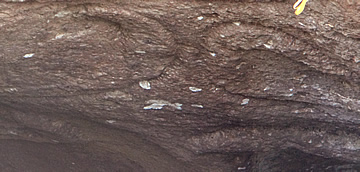


The south west of Sardinia has fascinating Roman and ancient Nuraghic sites to explore - the prehistoric necropolis of Montessu is particularly intriguing.
Related pages:
Alghero & North West
Oristano
Cagliari
Su Nuraxi, Nora, Montessu
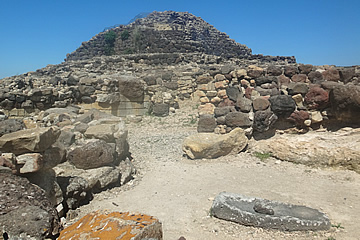
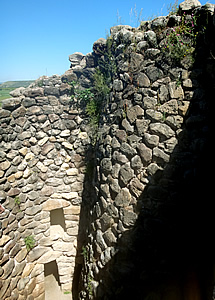
North of Cagliari, Su Nuraxi was the most complex and impressive nuraghic settlement that we saw in Sardinia.
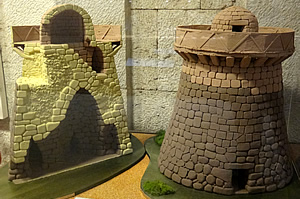
The central tower, once over 18m high, dates from the middle Bronze Age, around the 16th or 15th century B.C. Some time around the 13th century B.C. a wall and four towers were built to enclose the central tower and a courtyard, though the dating is not sure.
The central tower consisted of three "domed" rooms, one on top of another and its walls were thick enough to enclose a staircase.
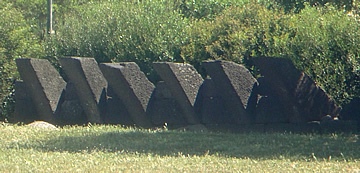
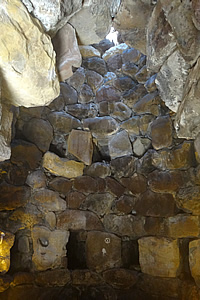
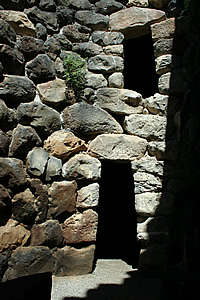
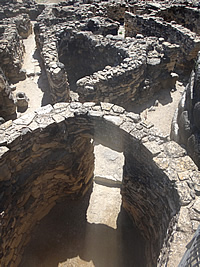
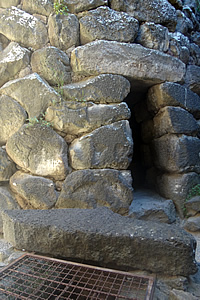
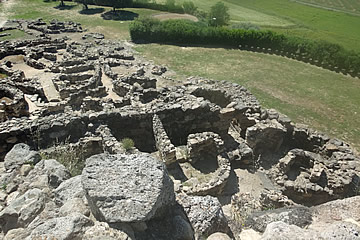
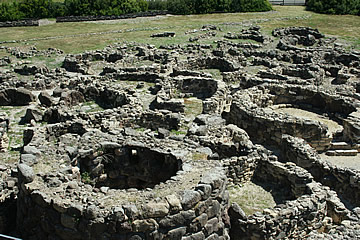
In the following two to three hundred years the walls were strengthened and surrounded by a second wall incorporating more round towers. The space between the two walls was occupied by a number of buildings and outside the second wall was an extensive array of some 200 houses and communal buildings.
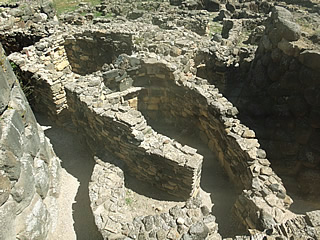
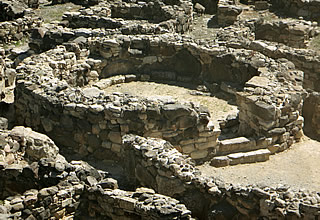
The Nuraghic village dates mostly from between the 10th and 6th centuries B.C. when the central defences were already in a state of decay, perhaps this was a time of much greater peace and security.
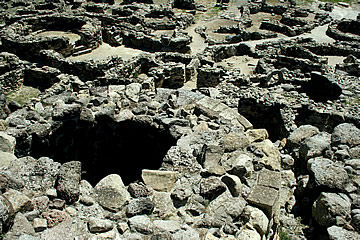
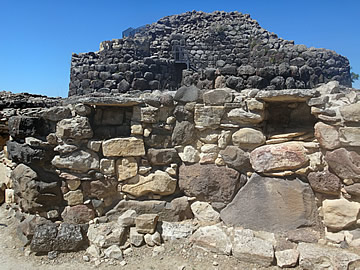
Visits to the site can only be made with a guide. Though we normally prefer to wander on our own, a guide is essential here as it's quite dangerous and there is some tricky clambering up and through the stonework to reach the inner courtyard.
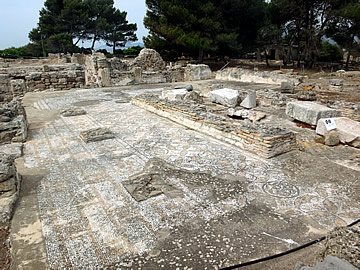
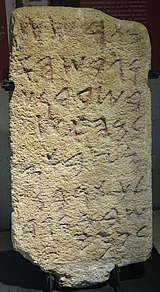
The South west coast was occupied first by Phoenicians in the 9th century B.C. then by Carthaginians and Romans. Nora is the most important of the archaeological sites of this area. Dominating the Gulf of Cagliari it was strategically well-placed and prospered for over a thousand years. In 238 B.C. the Romans made it the provincial capital for the whole of Sardinia.
A guide was mandatory when we visited but the group wasn't too large and he was pretty good.
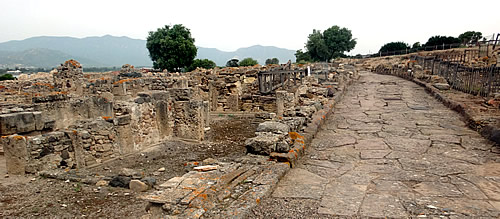
Though quite large in extent little has survived so it isn't the greatest set of Roman remains we've seen - Pompeii & Herculaneum, the amazing Villa Romana on Sicily spring to mind immediately - but it has a lovely situation. Here was found the Phoenician stone inscription of the first recorded use of the name "Sardinia" which is now in the Archaeological Museum in Cagliari.
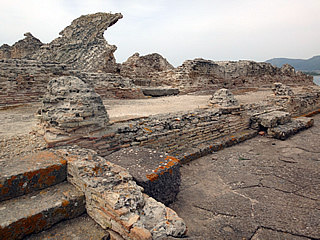
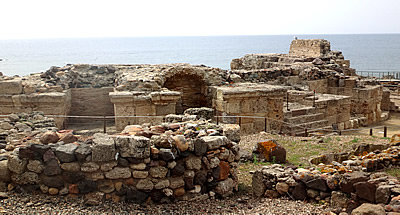
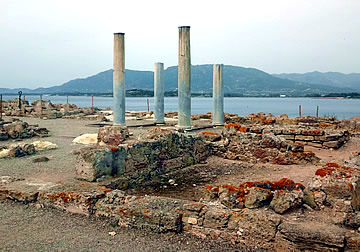
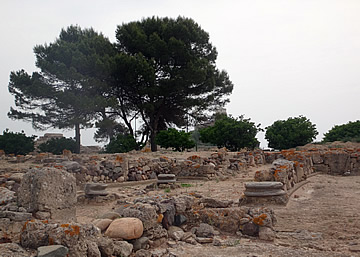
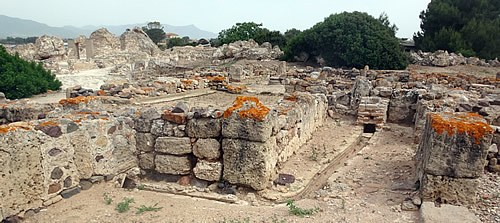
There are some nice mosaics still in situ which helps with vsualising the original rooms - these mosaics were walked on by the owners of the villas, seen by them and their guests every day. One can imagine how beautiful the rooms must have been with their expansive views over the sea.
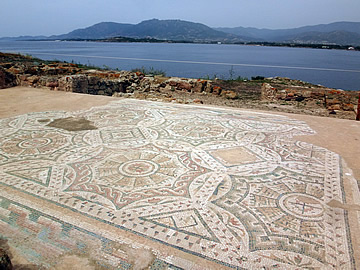
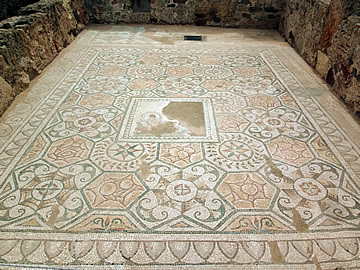
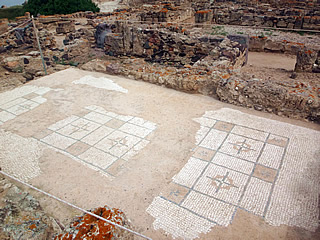
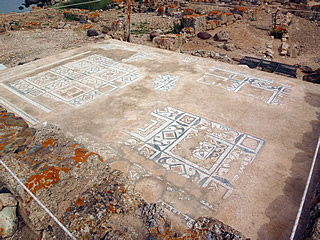
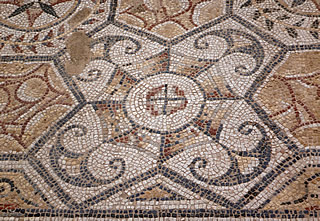
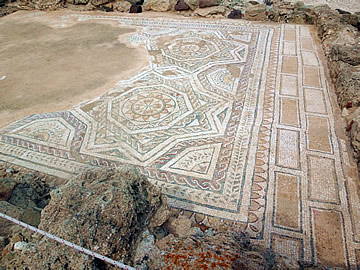
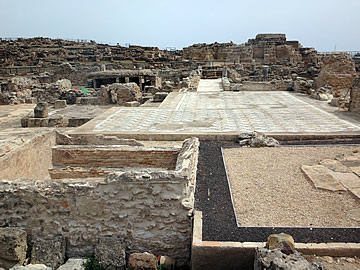
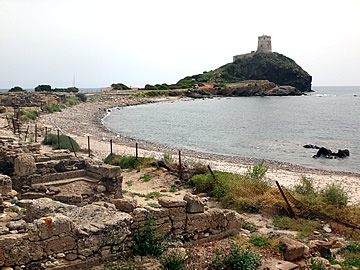
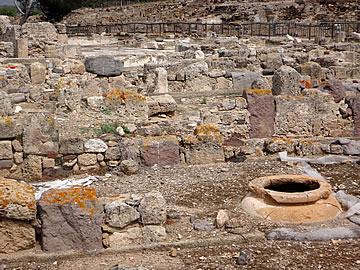
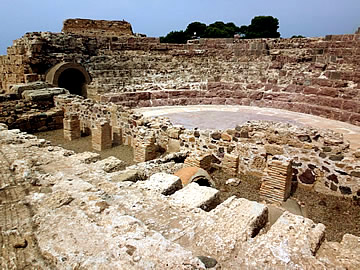
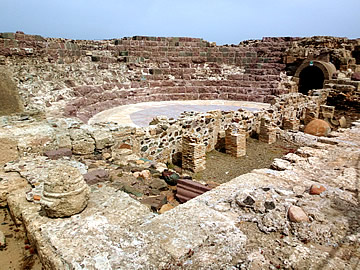
The small theatre overlooks the sea and it must have been very pleasant, with cool sea breezes, to see a performance here as the sun went down. Several large empty jars were placed under the stage to amplify sounds.
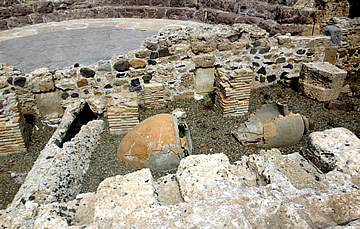
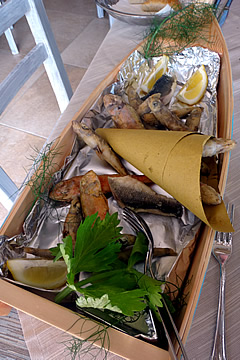
Before tackling Montessu we had lunch at Crar' e Luna just west of Chia. It serves excellent fish - numerous different types.
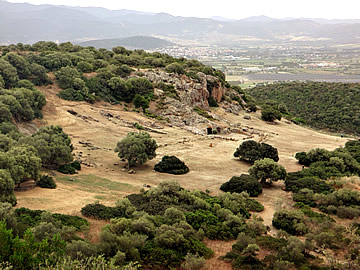
The prehistoric necropolis of Montessu lies 2km north of Villaperuccio, spread out on the sides of a valley which forms a natural amphitheatre facing the sea. It consists of about 40 Domus de Janus or Fairy Houses - artificial caves acting as tombs - of the Ozieri people, dating from 4000-3000 B.C. Some symbolic sacred decoration such as spirals can still be seen on some of the tomb walls.1
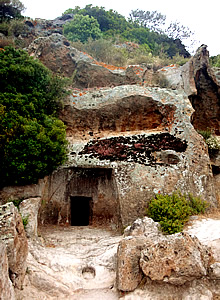
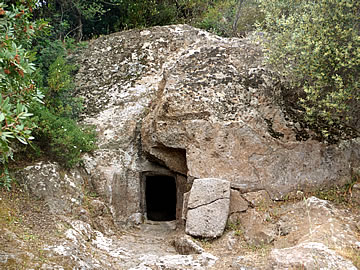
There are symbols associated with a Mother Goddess and a Bull God represented by double horns. The spiral may represent the concept of life after death.
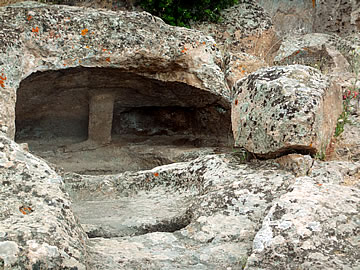
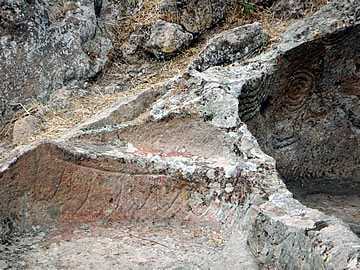
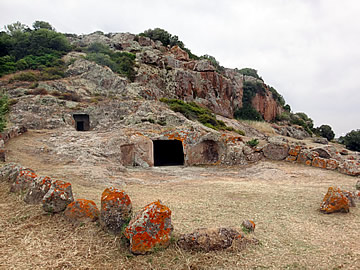
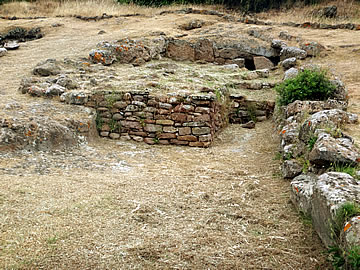
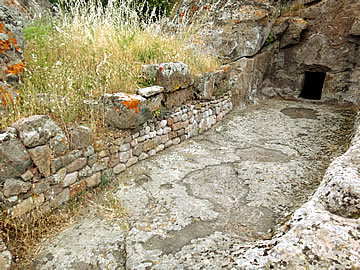
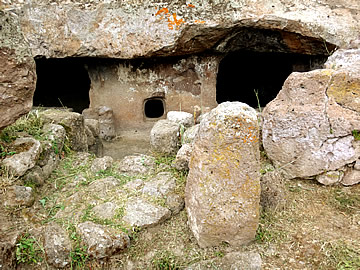
The entrances are carefully carved, some severely rectangular in shape
It makes for a good and interesting walk and I think it's possible to have a guide if you wish, though it's not difficult to find your way around the site.
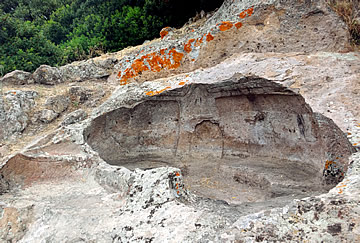
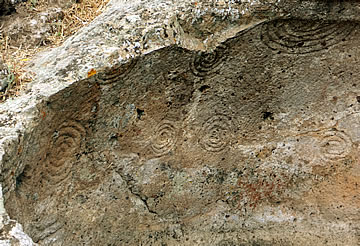
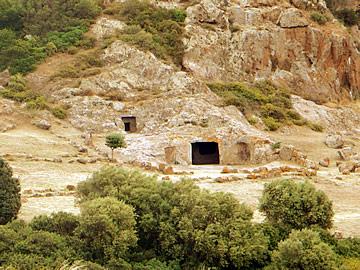
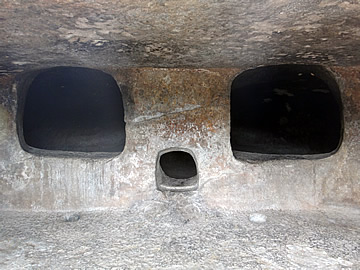
There are two types of shape for the burial caves: one is roughly circular with curved chambers and ceilings and a small vestibule, the second is rectangular with flat ceilings and usually approached by a path carved from the rock and lined with stones or perhaps even built walls, rather like two different architectural styles.
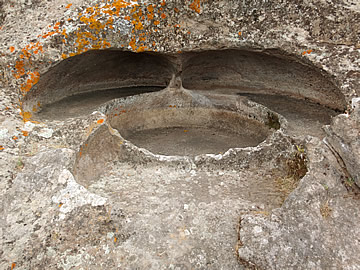
Sa Cresiada or the Little Church tomb is another quite complex architectural survival. Its vestibule is sunken and like the Cave of Pigs its back wall - the front wall of the burial chamber - has three "entrances".
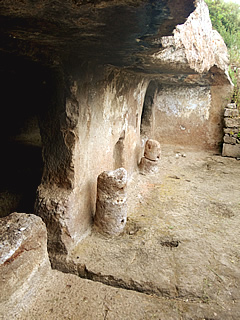
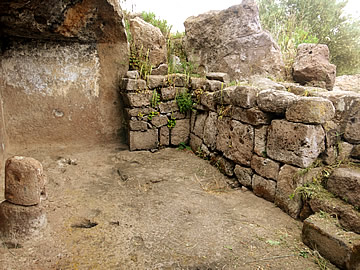
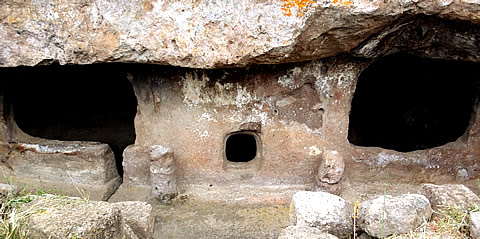
On either side of the central smaller hole in the vestibule are the remains of a small pillar.
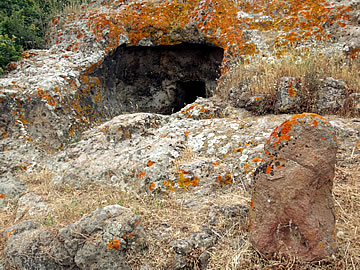
The quite elaborate tombs were almost certainly reserved for more prestigious burials. There seem to be numerous examples of more austere burial chambers.
